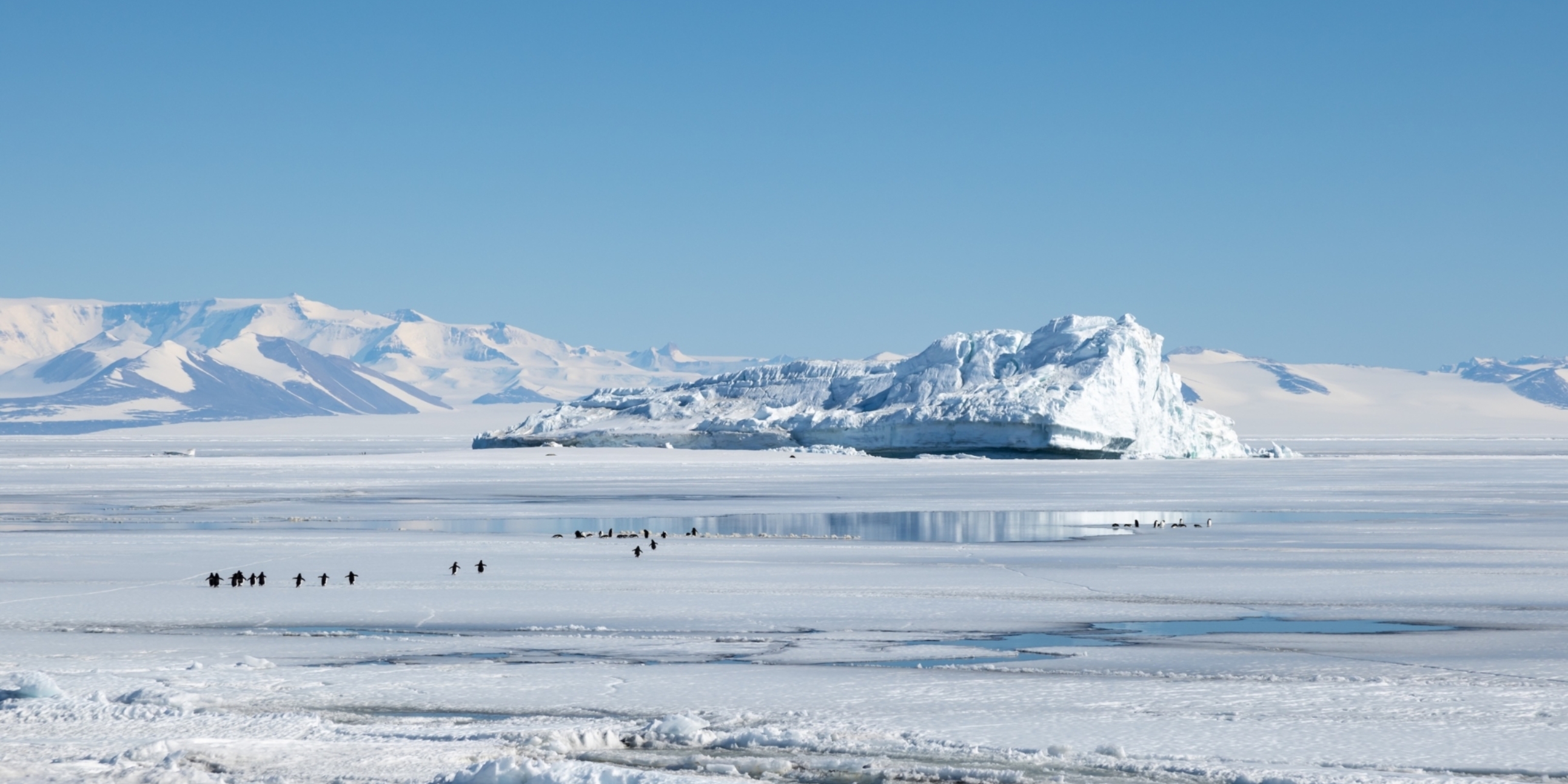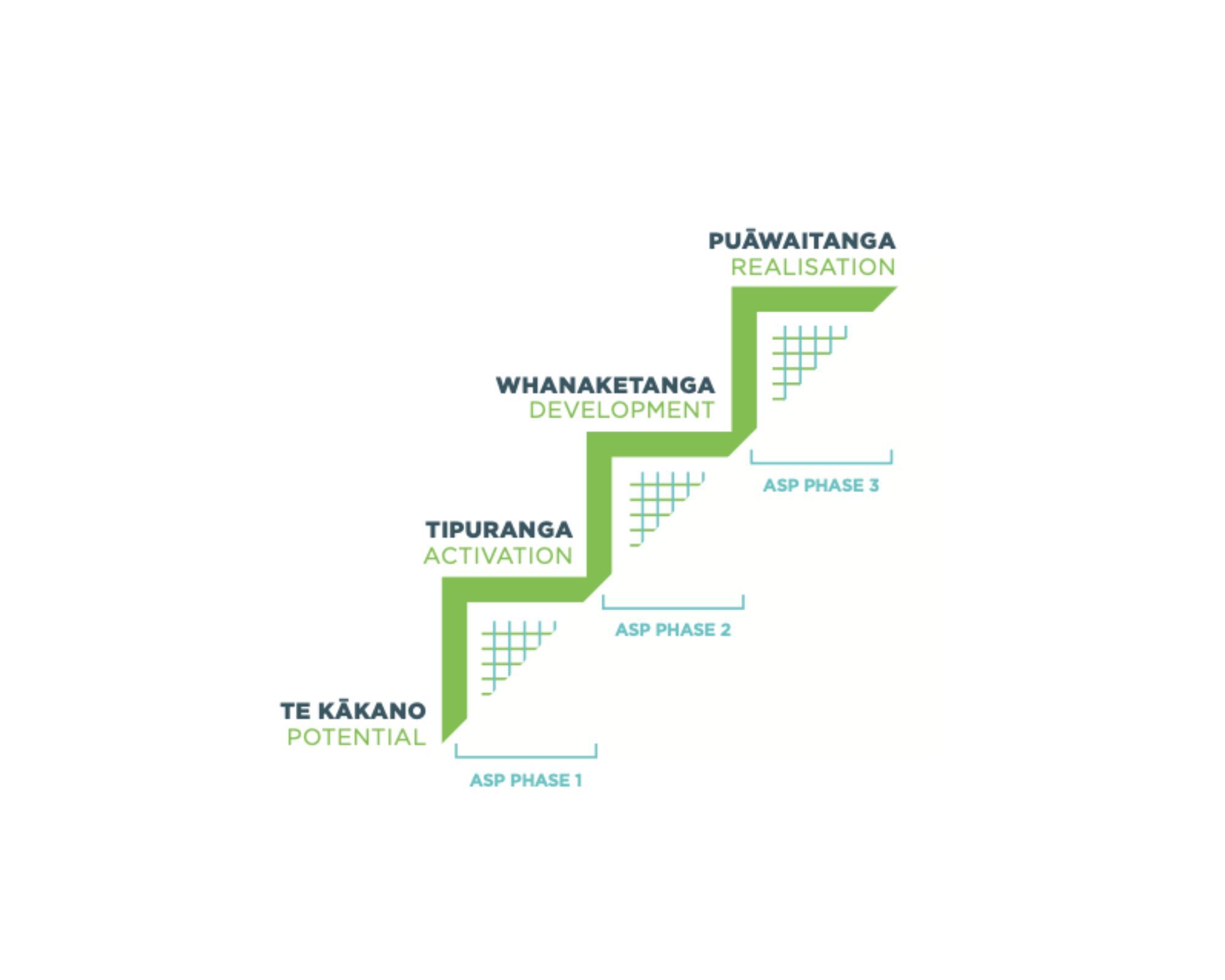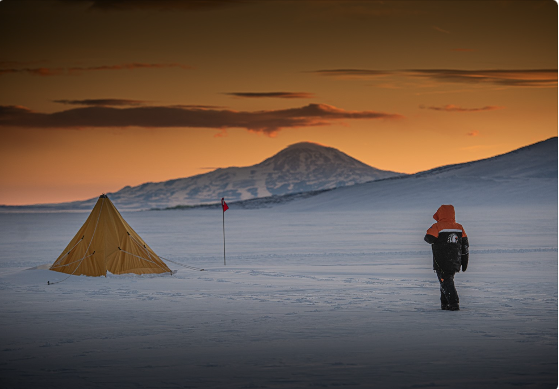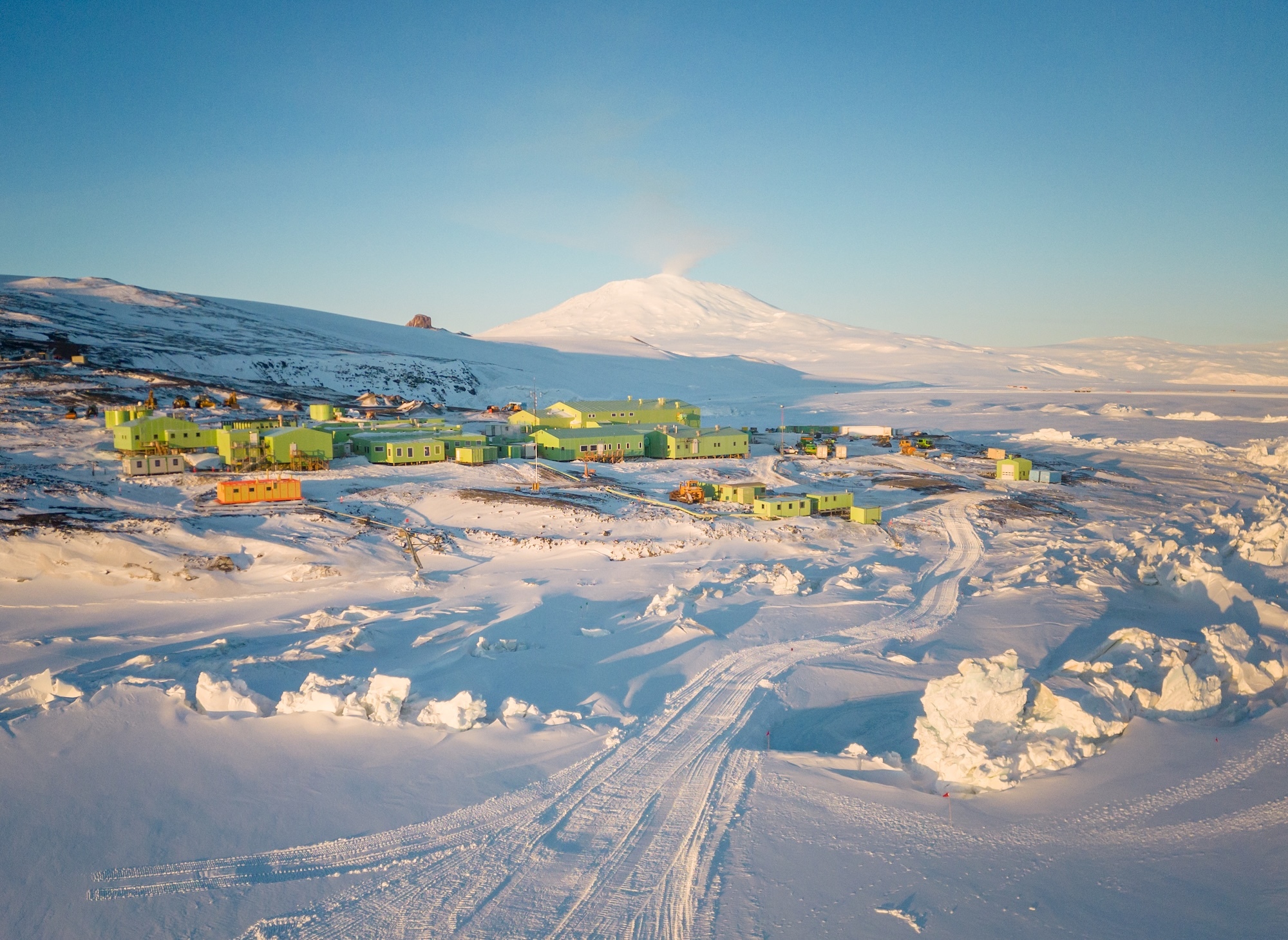
Penguins and iceberg at Cape Evans. Photo: Anthony Powell/Antarctica New Zealand
Case Study: Enhancing mātauranga Māori and Māori participation in Antarctic science
The Antarctic Science Platform is committed to ensuring that Aotearoa’s leadership in Antarctic and climate science reflects the values, knowledge and aspirations of Māori.
Why Antarctica matters
Māori connections to Antarctica and the Southern Ocean stem from the kōrero tuku iho (historical narratives) of Tama Rereti and Hui Te Rangiora, early voyagers into the Southern Oceans and Antarctica. Today, there is a growing awareness that environmental changes in Antarctica and the Southern Ocean will directly impact Māori communities. Rising sea levels and extreme weather events threaten traditional food harvesting practices and may necessitate the relocation of marae in coastal communities. Shifts in ocean currents, atmospheric conditions and ecosystem dynamics affect migratory species, such as whales and seabirds—taonga species that hold deep cultural and spiritual significance as story carriers and representatives of ātua.
For many decades, New Zealand’s Antarctic science research, governance and on-ice activities, while based on principles of environmental stewardship and intergenerational welfare, had limited incorporation of Te Ao Māori and mātauranga Māori (Māori knowledge) and Māori have received limited direct benefit from Antarctic research.
A strategic approach
The Platform’s vision is that, “New Zealand’s Antarctic science excellence is enhanced through mātauranga Māori, and Māori benefit from participation in, and engagement with, Platform initiatives”.
The Platform’s current Vision Mātauranga strategy—refreshed in 2025—acknowledges the ongoing journey of learning and growth. Using a Poutama model (Figure 1), we first recognised the potential (te kākano), and then the first phase of the Platform (2018-2025) was focussed on growth (tipuranga). In 2019, the initial Vision Mātauranga strategy focussed on initial engagement with iwi/Māori and increasing Māori representation. Nurtured by the Kāhui Māori, the workplan evolved to interweave three whainga (goals): research excellence, capability development, and communication and knowledge transfer.
Māori leadership in the Platform has flourished. There has been continuous Māori representation in the Platform’s governance group since its inception. The Kāhui Māori, especially its co-chairs, have been instrumental in developing Māori priorities and aspirations, underpinned by a comprehensive workplan. Māori representation, capacity and input was further enhanced in 2024 with the appointment of a Kaiārahi Rangahau Māori and Kaihautū (Māori Strategic Advisor) to the Platform’s leadership team, and the addition of a Māori member in the Platform’s Policy Interface Working Group.

A poutama model guides the Platform’s Vision Mātauranga strategy. Credit: Gwen Hendry
A journey to Te Ao Māori
The Platform has built relationships with, and benefitted from the learnings of, other programmes, organisations and individuals who are also on an Antarctic and Southern Ocean journey to/with Te Ao Māori. For example:
- The Platform’s Kāhui Māori Advisory Group was originally formed to support the Deep South National Science Challenge, and in 2020 agreed to also guide the Platform.
- Platform members presented in the 2020 online seminar series: Māori and the Antarctic. The wānanga (led by the Ross-RAMP programme) aimed to open a kōrero with hapū and iwi as part of research on the Ross Sea in Antarctica.
- The online storymap Te Tai Uka a Pia (2021) developed by Prof Sandy Morrison and Aimee Kaio through the Deep South National Science Challenge explored Iwi relationships with the Southern and Antarctic Oceans. In the Platform this work was continued, including a series of wananga and kōrero, and a paper in progress, on Mā Te Tiri o te Moana a Aotearoa e ora ai: Why change in Antarctica matters for Aotearoa New Zealand and Māori.

Antarctic field camp. Photo: Stuart Shaw/Antarctica New Zealand.
Interweaving Antarctic science and mātauranga Māori
The Platform has made advances in better connecting Te Ao Māori ki te ao rangahau (the world of Māori to the world of research) to facilitate more culturally responsive and effective approaches to Antarctic research.
- Kāhui-led workshops and presentations on mātauranga Māori and Te Ao Māori in the context of Antarctic research were well attended at the 2021 NZ Antarctic Science Conference, 2023 joint New Zealand-Australian Antarctic Science Conference, and the Platform hui in 2020, 2022 and 2025.
- Kāhui co-chair Aimee Kaio presented a keynote on Māori associations with Southern Oceans at the 2023 INSTANT Conference held in Italy.
- Kāhui co-chair Prof Sandy Morrison provided guidance to the Ministry of Foreign Affairs and Trade on during their development of the New Zealand Antarctic Research Directions and Priorities 2021-2030, and was invited to provided remote support for the 2023 New Zealand delegation to the Antarctic Treaty Committee meeting in Santiago, Chile.
- Supported by Platform members, the 2023 Scientific Committee on Antarctic Research Biology conference in Ōtautahi Christchurch was enriched by tikanga (traditions) and mātauranga (knowledge). This was a deliberate effort to enrich the scientific discussions and provide a more holistic perspective on Antarctic biology; q half-day session was dedicated to showcasing Māori exploration and research in the deep south.
- An exciting initiative involved the collaboration with Te Kura o Motupōhue in Bluff, where tamariki participated in the naming and tracking of a sea ice tracker. Through this project the students learned about Antarctic science, the role of sea ice trackers, and their importance in climate research.
- The Platform is funding a Māori-led research project in 2025, Kura hau awatea, kura hau pō, which aims to deepen understanding of mātauranga Māori by exploring the connection between Māori astronomical knowledge and the environment of Antarctica.
- The Platform has been gifted a whakataukī (proverb)—Te Tiri o te Moana, Te Tiri o te Tangata—which speaks to the relationships between Antarctica (Te tiri o te Moana), the gods (Ātua), people (tangata) and knowledge (mātauranga). An accompanying karakia has also been composed for use by New Zealand’s Antarctic community.
- New, aligned research programmes, such as the Antarctic Sea-Ice Switch Endeavour programme, benefit through the incorporation of Māori research interests and knowledge developed in the Platform, further growing Māori participation and capability.

Scott Base, Ross Island. Photo: Anthony Powell/Antarctica New Zealand.
Looking forward
Building on the journey of the Platform's first phase, Māori engagement has informed the design of the Platform’s second phase (2025-2032). For Vision Mātauranga, the Platform moves into whanaketanga (development): commencing a dedicated mātauranga Māori research programme, aiming to steadily increase investment in Māori-led research, using wānanga to explore initiatives that will grow Māori participation and capability. Reflecting on the rich and meaningful progress to date, in this next important phase we are working to achieve puāwaitanga—interweaving mātauranga Māori and Platform science together, while respecting Māori sovereignty over their own mātauranga and data.
This case study was prepared as part of the Platform’s annual reporting to the Ministry of Business, Innovation and Employment for the 2024/25 contract year. It describes the Platform’s progress since 2018 towards enhancing New Zealand’s Antarctic science excellence through mātauranga Māori and towards increasing Māori participation in the Platform.